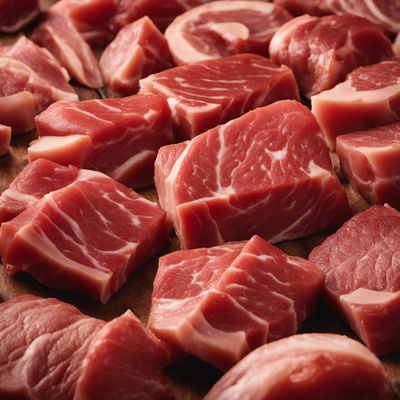
Ingredient
Equine fresh meat
The Gastronomic Delight of Equine Cuisine
Equine fresh meat, derived from horses, is lean and tender with a deep red color. It has a slightly sweet and earthy flavor, reminiscent of beef but with a hint of gaminess. The meat has a fine texture and is known for its tenderness, making it a versatile ingredient in a wide range of dishes. Equine meat is often praised for its low fat content and high protein levels, making it a healthy choice for meat lovers.
Origins and history
The consumption of horse meat dates back centuries and has cultural significance in various regions. In some countries, such as France, Italy, and Japan, horse meat has been a part of traditional cuisine for centuries. It was historically consumed due to its availability and nutritional value. While the consumption of horse meat is controversial in some cultures, it remains an important ingredient in many culinary traditions.
Nutritional information
Equine fresh meat is a good source of high-quality protein, essential amino acids, iron, and vitamin B12. It is relatively low in fat and calories compared to other meats, making it a nutritious choice for those seeking a lean protein option.
Allergens
Equine fresh meat may cause allergic reactions in individuals with a sensitivity to horse proteins. It is important to exercise caution and consult with a healthcare professional if you have any known allergies.
How to select
When selecting equine fresh meat, look for cuts that are bright red in color, with a firm texture and minimal odor. Avoid meat that appears discolored or has a strong smell, as these may indicate spoilage. Additionally, choose meat from reputable sources that adhere to proper handling and storage practices.
Storage recommendations
To maintain the freshness and quality of equine fresh meat, it should be stored in the refrigerator at a temperature below 40°F (4°C). It is best to consume the meat within a few days of purchase, but it can be stored in the freezer for longer-term storage. Proper packaging, such as vacuum-sealed bags, can help extend the shelf life.
How to produce
Producing equine fresh meat requires specialized knowledge and facilities. It involves raising horses for meat production, ensuring their welfare, and following strict regulations for processing and slaughter. It is recommended to leave the production of equine fresh meat to professional farmers and suppliers.
Preparation tips
Equine fresh meat can be prepared using various cooking techniques, including grilling, roasting, braising, or pan-searing. It is important to cook the meat to the desired level of doneness, as overcooking can result in toughness. Marinating the meat before cooking can enhance its flavor and tenderness. Equine meat pairs well with bold flavors and spices, making it suitable for stews, stir-fries, or even as a steak.
Substitutions
N/A (Equine fresh meat does not have a direct substitute due to its unique flavor and texture.)
Culinary uses
Equine fresh meat is commonly used in dishes such as horse steak, horse tartare, horse sausages, and horse stews. It is also utilized in traditional dishes like Italian bresaola or Japanese basashi (raw horse meat). The versatility of equine meat allows it to be incorporated into various cuisines, adding a distinct flavor to the dishes.
Availability
Equine fresh meat is commonly available in countries such as France, Italy, Belgium, Japan, Kazakhstan, and Argentina, where it is culturally accepted and regulated. However, its availability may be limited or restricted in some regions due to cultural or legal considerations.

